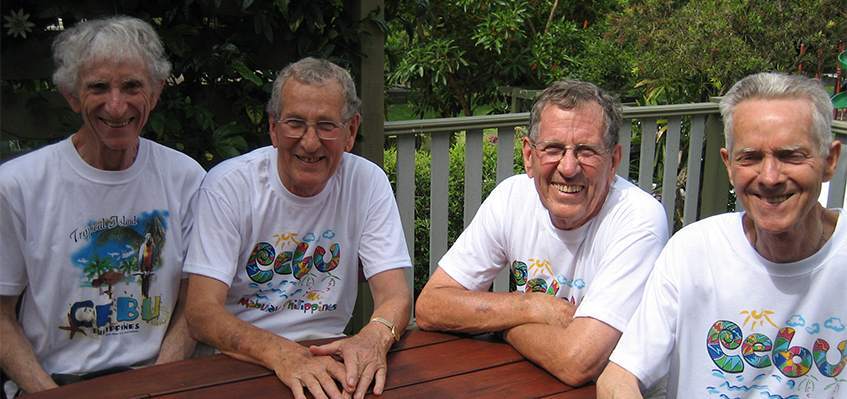12 May 2015

KATE CROSBIE and HEIDI DOUGLASS | h.douglass@unsw.edu.au
For John Stapleton, the best thing about being a twin was never being bullied at school: “There were always two of us to fight”. For Terry Stapleton, it’s the “stronger bond” between twins; that, and meeting John for a beer most Fridays at The Oaks in Neutral Bay. Both twins maintain a physically and mentally active life, but in different ways. These differences, as well as their similarities, are helping CHeBA researchers understand the role of genetic and environmental factors in cognition and healthy ageing.
John and Terry Stapleton, along with their non-twin brothers Eden and Peter, all aged over 80, have been participants in CHeBA’s Older Australian Twins Study (OATS) since its inception in 2007. Participants undergo rigorous medical and cognitive function tests, provide blood samples and have a magnetic resonance imaging (MRI) scan of their brain. Information about environmental factors, such as medical and psychosocial history, lifetime physical and mental activity, and nutrition is also collected. Baseline, two-year and four-year follow-up tests are carried out to measure change.
Terry Stapleton encouraged his brothers to participate in OATS whilst semi-retired, in order to contribute to medical knowledge about ageing. “I was already a volunteer in a couple of community organisations and was happy to volunteer for a worthwhile scientific endeavour,” he says.
For four years, Terry has subscribed to an online brain training tool and undertaken 20 minutes of training on most days, as well as following daily news and world events online. Terry’s commitment to mental activity also includes membership in a weekly book discussion group, regular attendance at The Lowy Institute and Workers' Educational Association lunchtime seminars, weekly luncheons at The Wine and Food Society of New South Wales, and seeing concerts by The Song Company and the Brandenburg Orchestra.
When asked what he does to keep mentally active, John is more circumspect; “Nothing special, except to concentrate on living an active and independent life.”
Both twins recognise the importance of maintaining their physical as well as mental health. Both walk regularly with John enjoying bush walking and choosing not to own a car. While Terry has been playing tennis every Sunday morning for the past 47 years, John cycles once or twice a week for a total distance of 40-60 kilometres.
These details have helped CHeBA researchers examine the role of mental and physical activity in maintaining a healthy brain. The study has shown that twins with different levels of cognitive activity and social activity also perform differently on tests of cognitive domains. Differences in cardiovascular health, physical health and vision and hearing were also reflected in differences in brain health. The Stapleton twins, both being active physically and mentally, performed equally well on cognitive tests. To date, OATS findings have significantly contributed to understanding the genetic factors underlying aspects of cognition, brain structure and the role of proteins in healthy ageing. CHeBA researchers have examined genetic influences on processing speed, memory, planning and problem solving. MRI and blood data has contributed to studies examining the heritability of brain structure and function, the role of brain metabolites, and epigenetics to progress research into memory and learning. Wave 4 of OATS follow-up tests are due to finish in 2015.
